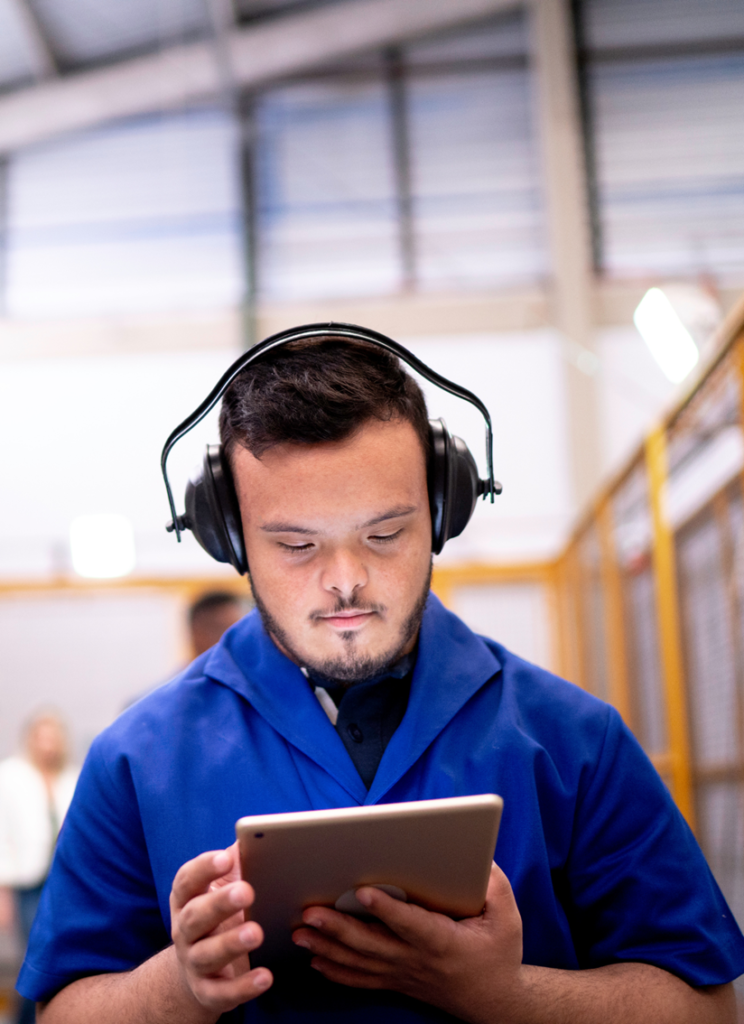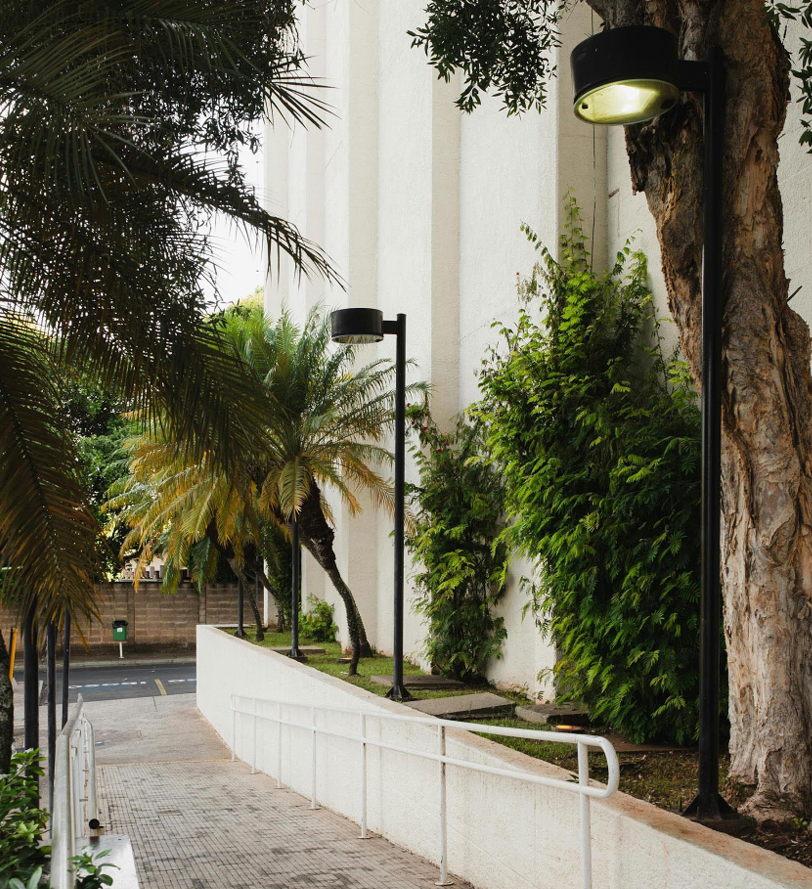
What is inclusive childcare?
Inclusive childcare is an environment where all children, educators and parents are welcomed and respected regardless of their needs, abilities or personal circumstances. In addition to providing a suitable physical setting, these services support the development of every child in a safe environment.
Inclusiveness is based on a holistic approach to create a community where diversity is celebrated and every child feels valued. This includes support for learning and development through various means of representation, expression and commitment. The seven principles of inclusive design—equitable use, flexibility in use, simple and intuitive use, perceptible information, tolerance for error, low physical effort, and space for approach and use—can guide the design of this environment to ensure optimal accessibility and inclusiveness.
All children have the right to learn, play and discover […]. Their integration into the social and educational environment is essential as this can help them to socialize and learn many different social skills. It also develops successful personal relationships through their practice and inclusion in all educational activities, play and discovery with ordinary children.[1]
Overview of the situation
While there has been significant research on educational programs and the inclusion of children in daycare, few studies actually address environments that meet the needs and abilities of each child. There is still room for improvement. Mandatory accessibility standards in built environments are a good starting point, but the optimal solution would be to create spaces that meet the needs of all their users.
In Québec, public childcare services, such as subsidized CPEs and childcare centres, must comply with the requirements of the Ministère de la Famille. This requires daycare owners to navigate between different regulations to provide inclusive environments that work for everyone.
Standards and obligations
Currently, standards exist to support the accessibility of new construction in Québec, but they do not specifically take into account children or people of small stature. However, some guides and standards incorporate aspects related to children. Here’s an overview:
Good practices
Although buildings specifically designed for children are not yet governed by mandatory standards, it is essential to think about designing an environment suited to their diverse abilities, needs and challenges. Below are some good practices from Canadian and Québec construction guides. While these standards focus primarily on accessibility to the built environment in general, they can be adapted to the needs of children:
- Stationnement : Prévoir des aires de stationnement plus larges pour faciliter la circulation des parents avec poussettes ou des personnes utilisant une aide à la mobilité.
- Circulation efficace et sans obstacle : Assurer une surface de plancher stable et non réfléchissante, ainsi qu’une largeur de corridors suffisante pour permettre à deux enfants utilisant une aide à la mobilité de se croiser. Consultez les normes applicables pour des détails spécifiques.
- Universal toilets: These facilities offer greater flexibility, more space and allow a child to be accompanied by a person of a different gender. Key points:
Adapted bowl height, Sufficient space between the toilet and the wall to facilitate the transfer of children using mobility aids, Installation of lateral and rear grab bars for greater safety, Easy-to-use handles that don’t requiring twisting the wrist or pinching actions - Accessible controls: Controls such as switches, faucets, soap or paper dispensers and clothing hooks must meet accessibility standards in the standards guides. Amenities should be at different heights to accommodate children of different sizes.
For more detail, the 2010 ADA Standards for Accessible Design (ADA) (United States) provides specific recommendations regarding accessibility for children.
Going beyond the standards
Good practices are of paramount importance because they allow us to go beyond minimum requirements and imagine innovative solutions. Employers and educators can help create inclusive environments by:
- Designing architectural environments that promote inclusion
- Organizing activities that encourage integration
- Raising children’s awareness of the diverse needs of their peers
- Building on other inclusive childcare models
- Communicating their needs to the Ministère de la Famille, des Aînés et de la Condition féminine
The contribution of universal design
Applying the seven universal design principles to the design of an inclusive daycare facility improves accessibility for all children, regardless of their abilities. This fosters a safe, stimulating and supportive environment for cognitive development, social interaction and inclusion. The following is a non-exhaustive description of these principles:
- Equitable use: Providing the same means of use for all children, identical whenever possible, or equivalent when necessary.
- Flexibility in use: Providing a choice of methods adapted to different needs, while allowing each child to progress at their own pace.
- Simple and intuitive use: Designing environments and tools that are easy to understand, regardless of the child’s cognitive or linguistic abilities. Limiting unnecessary complexity and guiding children through their activities.
- Perceptible information: Communicating instructions through different modes (pictorial, verbal, tactile) to maximize their understanding.
- Error tolerance: Minimizing risks and errors with a thoughtful layout, making high-use items easily accessible and securing hazardous components.
- Low physical effort: Offering equipment and games that require little effort for comfortable use without any risk of excessive fatigue.
- Size and space for approach and use: Providing optimal visibility of essential elements without obstruction, adapted to the seated or standing position of children and educators, while facilitating ergonomic access to all components, regardless of posture or mobility. This includes a variety of fitted grips and handles, as well as sufficient space for comfortable use of mobility devices.
Examples of good practices
- Offering various light sources adapted to children’s activities.
- For example, using pendant lamps in quiet homework spaces rather than fluorescent ceiling lights. Suspended lighting like this creates a soothing atmosphere that helps children concentrate.[3]
- Reducing sources of ambient noise that can overstimulate children. Noises such as echoes or air conditioning systems can be particularly intrusive.
- According to one study, the level of noise is related to signs of stress in children, such as repetitive motor movements, the use of earmuffs, sudden gestures, loud outbursts, eye blinking, etc.[4]Limiting these noises contributes to the well-being of each child and educator.
- Offering children choices tailored to their needs and preferences during free play times. Some prefer small indoor and outdoor spaces where they can be alone or play in small groups, with an opportunity for a staff member to provide support when needed.
- On the other hand, other children greatly appreciate large outdoor spaces, which are conducive to more adventurous games.[5] Make sure you offer a variety of choices to satisfy each child.
- Adaptez les aires de jeux, l’équipement, le matériel et les outils pour favoriser l’inclusion.
For more information, see CSA Z614:20 on children’s playground equipment and surfacing in the documents section.
Available resources
Training
- Training on how to create an inclusive childcare environment, Idéaux.
- Specialization in inclusive childcare education, Cégep Marie-Victorin.
Subsidies
Federal:
- Enabling Accessibility Fund: financial assistance for large and small development projects, Government of Canada.
- Child Disability Benefit (CDB): financial assistance for families supporting a child with severe and prolonged impairment in physical or mental functions, Government of Canada.
Provincial:
- Allowance for Integration into Childcare: funding for a subsidized educational childcare provider for a child who has an impairment causing a significant and persistent disability, Government of Québec.
- Educational Childcare Act, Chapter VII “Parental contributions and subsidies”: Act and regulations on contributions and subsidies for educational child care.
- Supplement for Handicapped Children: financial assistance to families for the custody, care and upbringing of a child whose mental impairment or disorder significantly limits the child in carrying out their lifestyle habits.
Documents
Guides on standards:
- Guide sur l’accessibilité des bâtiments, Québec Construction Code.
- Table de concertation régionale des associations de personnes handicapées de Lanaudière, (TCRAPHL) [Lanaudière regional disability association consultation table]
- ADA Standards for Accessible Design, Department of Justice, United States.
Online guides:
- Guide to promoting the inclusion of children with special needs in childcare (0-4 years), TCRAPHL.
- Ergonomic childcare centre design, ASSTSAS.
- Inclusion policy drafting guide, AQCPE and Carrick.
- Integrating a child with a disability into childcare, Government of Québec
- Guide for developing a policy on integrating children of newcomers and managing diversity in educational childcare], Government of Québec
- A Guide to Creating Inclusive Classrooms, Brightwheel.
- Universal Design in Kindergarten and School, Guidelines and Universal Tools, Rehabilitation International.
Websites
- Ministère de la Famille
- Educational Childcare Act
- Responsabilités des services de gardeObservatoire des tout-petits: Statistics on “children in need of special support”
- Fondation Papillon: Resources and support for persons with disabilities and their families.
To ensure an inclusive environment for children, also consult the following fact sheets:
- MOHAMED AHMED ABDOU, H., ABDUL LATEEF AHMED GHANAM, A. (2020). “Architectural Role in Achieving Inclusion for Children with Disabilities in Nurseries,” JES Journal of Engineering Sciences, 1(1–20).
- GOVERNMENT OF QUÉBEC (2006). Act respecting the Ministère de la Famille, des Aînés et de la Condition féminine.
- STORVAN, L., FRØYTLOG, B., HENRIKSEN, P., L. SAETER, RUTH ASTRID. (2021). Design for Diversity. Universal Design in Schools and Kindergartens in Norway (1st ed.). Kommunesektorens Organisasjon, 83 pp.
- MOSTAFA, M., SOTELO, M., HONSBERGER, T., HONSBERGER, C., BROOKER LOZOTT, E. and SHANOK, N. (2022). “The Impact of ASPECTSS-Based Design Intervention in Autism School Design: A Case Study.” Emerald Publishing Limited, 18(2), 318-339.
- YTTERHUS, B. and AMOT, I. (2021). “Kindergartens: inclusive spaces for all children?” International Journal of Inclusive Education, 1-17.






